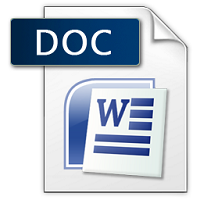₹198.00
Scroll down for Match your questions with Sample
Note- Students need to make Changes before uploading for Avoid similarity issue in turnitin.
Another Option
UNIQUE ASSIGNMENT
0-20% Similarity in turnitin
Price is 700 per assignment
Unique assignment buy via WhatsApp 8755555879
Description
| SESSION | AugUsT 2023 |
| PROGRAM | BACHELOR of COMPUTER APPLICATIONS (BCA) |
| SEMESTER | I |
| course CODE & NAME | dca1103 |
- State inclusion-exclusion principle. In a class of 1000 students, 625 students pass in Mathematics and 525 pass in Data Structure. How many students pass in Mathematics only and how many students pass in Data Structure only?
Ans. Inclusion-exclusion principle states that the number of elements in the union of two or more sets is equal to the sum of their sizes minus the size of their intersection, plus the size of the intersection of their pairwise intersections, and so on.
Formula:
|A ∪ B| = |A| + |B| – |A ∩ B|
Example: In
- Simplify into form and find its modulus and the amplitude.
Ans.
Ans.
Dividing the numerator and denominator by gives:
Multiplying the numerator and denominator by the conjugate
Its Half solved only
Buy Complete from our online store
https://smuassignment.in/online-store/
MUJ Fully solved assignment available for session SEPT 2023.
Lowest price guarantee with quality.
Charges INR 198 only per assignment. For more information you can get via mail or Whats app also
Mail id is aapkieducation@gmail.com
Our website www.smuassignment.in
After mail, we will reply you instant or maximum
1 hour.
Otherwise you can also contact on our
whatsapp no 8791490301.
- Evaluate .
- Solve the differential equation.
Ans a
To evaluate the definite integral , where and are the limits of integration, you can use integration by parts. The formula for integration by parts
Ans b.
This is a homogeneous differential equation, which means that we can rewrite it as a separable equation by dividing both
- Evaluate the followings:
(i) (ii)
- Find the probability of drawing a diamond card in each of the two consecutive draw from a pack of well shuffled 52 cards, (i) if the card is replaced, (ii) if the card is not replaced.
Ans.
(i) Evaluate the following:
This is a straightforward application of L’Hôpital’s rule. Dividing both the numerator and denominator by ,
- Check whether the following is Tautology or Contradiction:
- (i)
- (ii)
Ans. Solution 1:
Using a truth table:
- Apply Cramer’s rule to solve the system of equations: ; 2; .
Ans. To solve the system of equations using Cramer’s rule, we first need to calculate the determinant of the coefficient matrix.
| 3 | 1 | 2 || 2 | -3 | -1 || 1 | 2 | 1 || 3 | 1 | 2 || 2 | -3 | -1 || 1 | -2 | 0 || 3 |


